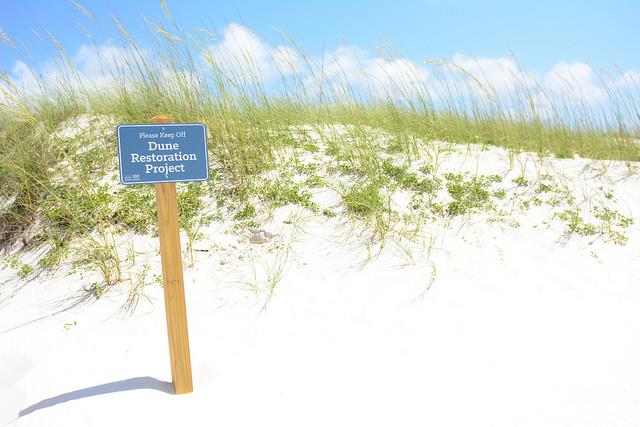Those plants with the large plumes you see along the beach may look like weeds, but they are a vital part of the ecosystem. Sea oats play an important role in coastal conservation. That’s why signs are posted along the beach asking you to avoid areas where there is plant vegetation or a dunes restoration project.
Sea oats are actually a miraculous little production plant, and there’s a whole lot more going on than those plumes you see on the surface. They have a massive root system capable of holding soil and sand in place during extreme weather like hurricanes and tropical storms.
The sand that collects around the plant actually stimulates its growth. The cycle of sand collection and plant growth facilitates expansion of the sea oats and the sand dunes. If a sea oat is buried by the sand, it develops an underground stem system that grows to the surface and produces another plant.
Sea oat leaves and stems also trap wind-blown sand. That increases the size of the dunes, too. Of course, sand dunes also help protect the coast from erosion during high winds and storm surges.
So, what does all this mean for the average beach-goer? We ask that you please use the boardwalks or walkways provided that help you avoid the sea oats and sand dunes. When you take pictures using sea oats as a background, make sure they are in the background. Don’t trample them in order to get a pic.
And whatever you do, don’t pick the sea oats. It’s illegal and you could be fined. Thank you for understanding how important the sea oats are and working to protect our beaches.



When i’m at the beach and i see them i try not to step on them. They don’t feel right when you step on a Sea Oats.